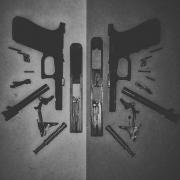Rich,
The trick is learning how to raise the handle to keep the curve flat on the stone and maintain the bevel angle at the same time. Buy a couple cheap POS blades and practice, practice practice. There are a ton of tutorials on youtube. Some of them are actually informative. Some of them will teach you what not to do!
I avoid combo blades and stick to full serrated or non serrated because I'm lazy when it comes to sharpening! With a combo blade treat it as two separate edges. Sharpen the non serrated portion then touch up the serrated part. Most times just hitting the flat side of the serrations is enough. If you need to truly sharpen the serrations, a slim steel or triangle stone(Sharp Maker) is necessary.




 Reply With Quote
Reply With Quote

 )
)




